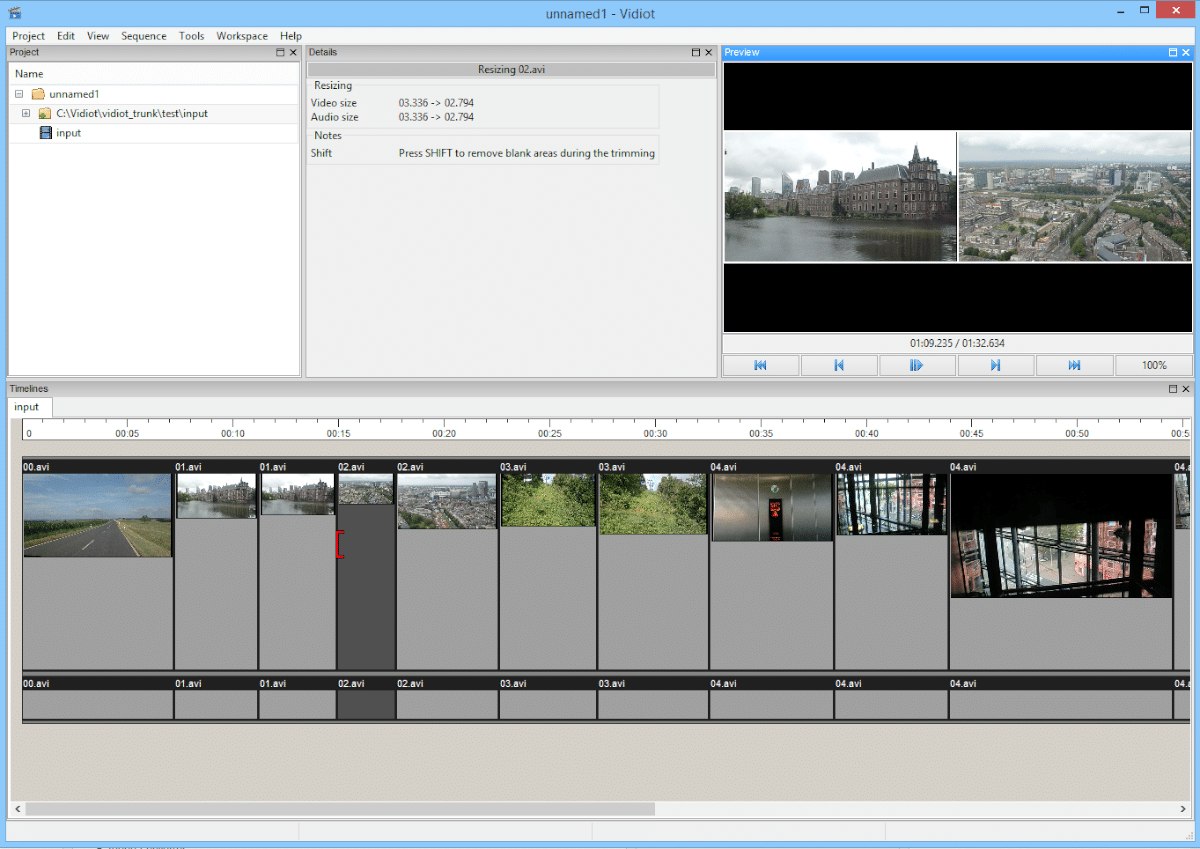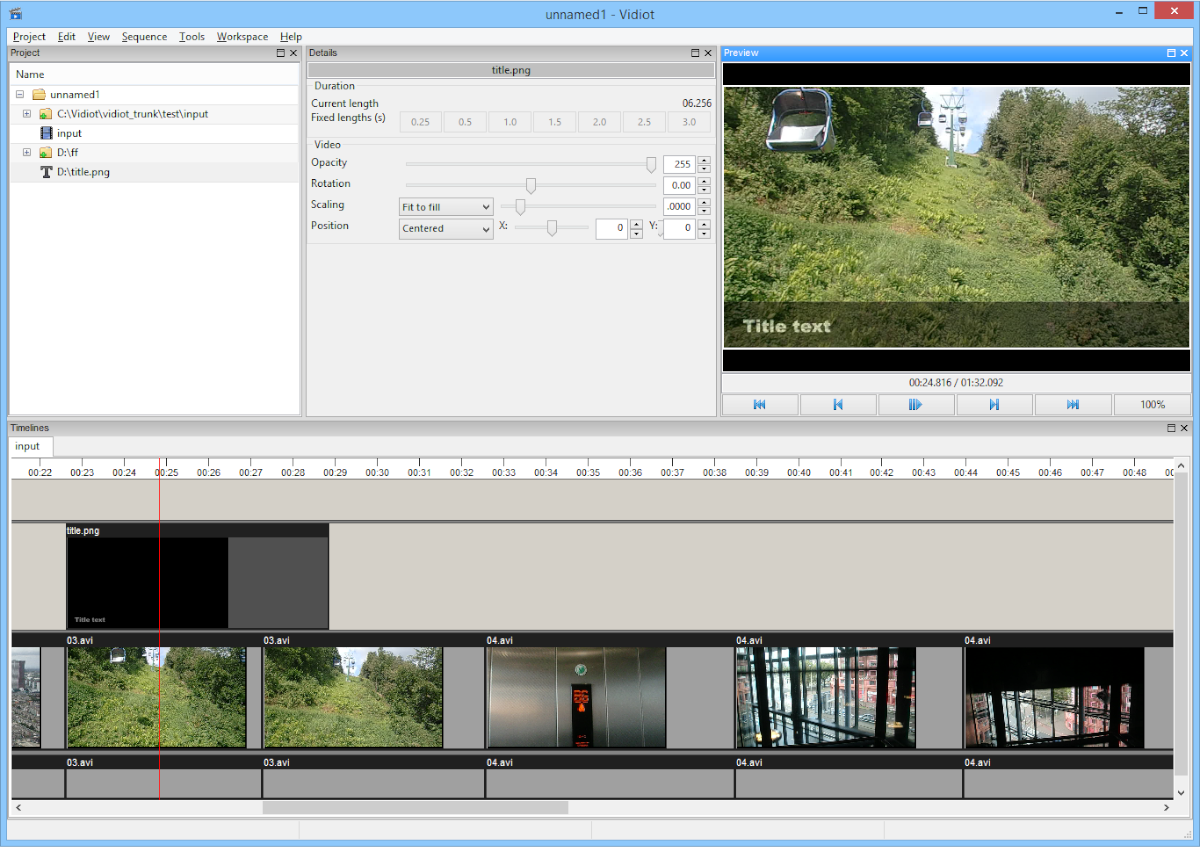How to install Vidiot video editor on Linux
Do you need a simple non-linear video editor for Linux? Consider reviewing Vidiot. It is a simple editing tool aimed at new users. It does basic things like composition, speed change, transitions, titles, and other essential things that a user would want when editing.
The Vidiot video editor works on Linux, and the developer has ported the program to Ubuntu and Debian via a downloadable DEB package. Additionally, users can install the app through a separate TarGZ file and a Snap package through the Snap store. Here’s how to make it work on your Linux system.
Ubuntu installation instructions
To get Vidiot up and running on your Ubuntu Linux system, start by opening a terminal window on the Ubuntu desktop. press Ctrl + Alt + T on the Linux desktop to open a terminal window. Or look for “Terminal” in the application menu and make it work that way.
With the terminal window on the Ubuntu desktop, use the wget download the command to get the latest version of Vidiot on your computer. Alternatively, head over to SourceForge and download the file “Vidiot-0.3.34-i386.deb” via web browser.
wget https://sourceforge.net/projects/vidiot/files/Vidiot-0.3.34-i386.deb/download -O ~/Downloads/Vidiot-0.3.34-i386.deb
With the command downloaded to your computer, use the CD command to move to the “Downloads” folder where the DEB package is located. Then use the fit to install command to install the Vidiot application on your computer.
sudo apt install ./Vidiot-0.3.34-i386.deb
Debian Installation Instructions

You will be able to use Vidiot on Debian Linux through the downloadable DEB package that the developer provides on their project’s SourceForge page. To start the DEB package download, open a terminal window on the Debian desktop.
To open a terminal window on the Debian desktop, press the Ctrl + Alt + T keyboard combination. Or search for “Terminal” in the application menu and run it that way. When the terminal window is open, use the wget download command to get the latest version of Vidiot DEB. Or, go to SourceForge and download the file “Vidiot-0.3.34-i386.deb” via web browser.
wget https://sourceforge.net/projects/vidiot/files/Vidiot-0.3.34-i386.deb/download -O ~/Downloads/Vidiot-0.3.34-i386.deb
After downloading the DEB package to your computer, you need to access the “Downloads” folder on your computer. To do that, use the CD command and access the folder. Or click “Downloads” in the Debian file manager.
cd ~/Downloads/
Inside the “Downloads” folder, use the dpkg -i command to install the latest version of Vidiot on your Debian Linux PC.
sudo dpkg -i Vidiot-0.3.34-i386.deb
Once the package is installed on your computer, you will need to correct any dependency issues that may have arisen during the installation process.
sudo apt-get install -f
Arch Linux Installation Instructions
Unfortunately, there is currently no way to install Vidiot on Arch Linux through official software repositories. It is also not available to Arch Linux users through the Arch Linux AUR. If you want this app to work on your Arch system, you will have to use Snap.
To start the installation on Arch Linux, make sure you have the Snapd runtime installed from the AUR. If not, follow our guide on the subject. Once it’s set up on your computer, use the following instant installation command below to install Vidiot on Arch.
sudo snap install vidiot
Fedora Installation Instructions

Vidiot works on Fedora Linux, but no downloadable RPM package files can be viewed. So instead, if you want to use this software on your Fedora Linux system, you will have to make it work through the Snap store.
To start the installation on Fedora Linux, make sure you have the “Snapd” runtime installed through the Fedora DNF package manager. If you haven’t configured this runtime on your computer, follow our guide on the subject.
After configuring the Snapd runtime on your Fedora Linux system, you can begin the Vidiot installation. Using the instant installation command then configure the application on your computer.
sudo snap instal vidiot
OpenSUSE Installation Instructions
Like Arch Linux and Fedora Linux, OpenSUSE does not have a way to download and install the Vidiot application on the system. Unfortunately, the developers have not created a native RPM package for the application. Fortunately, OpenSUSE can run the Snap app store, so the app may still work.
For the latest version of Vidiot to work on your OpenSUSE Linux system, start by installing the “Snapd” runtime on your computer using the Zypper package manager. After configuring the Snap runtime on your OpenSUSE computer, you can install the latest version of Vidiot on your computer with the following instant installation command below.
sudo snap install vidiot














